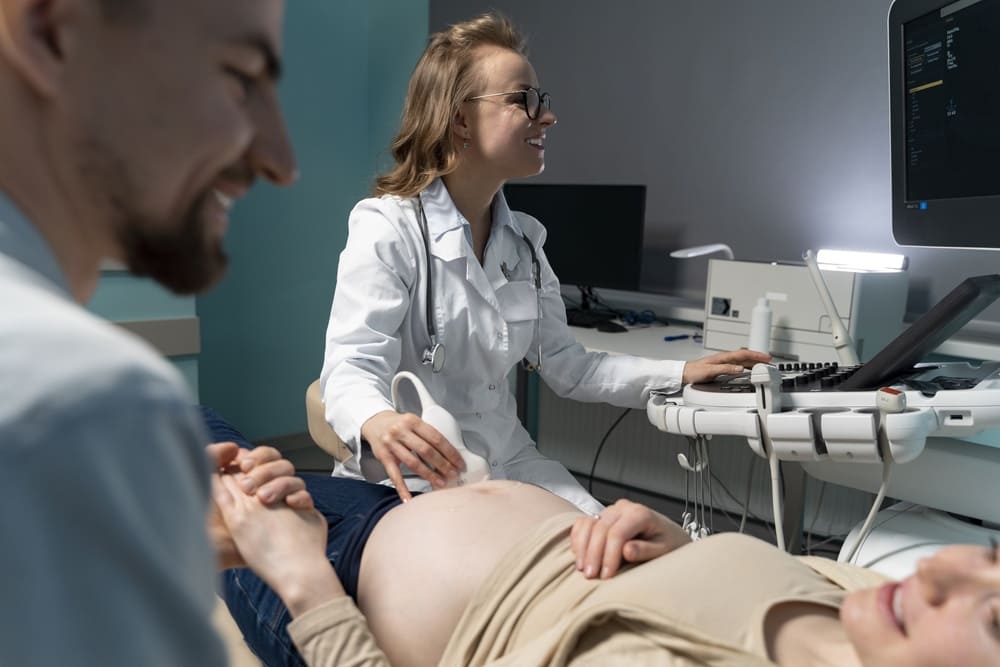The ROPA Method (Reception of the Partner’s Oocytes) is an assisted reproduction technique designed for female couples. One partner provides the oocytes and the other carries the pregnancy, so both share the biological and emotional experience of bringing a baby into the world.
What is the ROPA Method and what is It for?
The ROPA Method is a form of in vitro fertilization (IVF) in which one woman undergoes controlled ovarian stimulation (usually 150–225 IU of gonadotropins daily), provides the oocytes, and these are fertilized with donor sperm. Then the resulting embryo is transferred to her partner’s uterus. This way, both form a unique bond with the baby.
How is the ROPA Method Performed step by step?
1. Ovarian stimulation
The donor receives hormonal medication (FSH/LH) for 10–12 days to develop multiple follicles. Transvaginal ultrasounds and serum estradiol measurements are done every 2–3 days.
2. Follicular puncture and oocyte retrieval
Under sedation, oocytes are retrieved with an ultrasound-guided needle. Typically, 8–15 mature oocytes are collected.
3. Fertilization and embryo culture
The oocytes are fertilized by conventional IVF or ICSI and the embryos are cultured in incubators until the blastocyst stage (day 5 or 6).
4. Embryo transfer
The recipient is prepared with estrogen (2 mg IV every 12 h) and vaginal progesterone (600 mg/day). One or two blastocysts are inserted under ultrasound guidance.
5. Pregnancy Test and Follow-up
After 12 days, a blood beta-hCG test is performed. If positive, hormonal support and periodic ultrasounds continue to confirm the pregnancy.
Advantages and considerations of the ROPA Method
- Shared bond: both mothers participate biologically.
- High success rates: around 50 % implantation, similar to conventional IVF.
- Mutual support: more collaborative legal and emotional decision-making.
Considerations:
- Need for donor sperm with genetic screening.
- Specialized assisted reproduction laboratory.
- Variable costs depending on protocol and country.
To read a real testimonial: “With the ROPA Method, we both had a child”, visit our experiences section.
Personalized ROPA care
At Ingenes we understand that every couple is unique. We adjust doses (IUs) and protocols according to your hormonal and ultrasound profile, with medical and emotional support at every stage. Our team uses state-of-the-art technology to maximize your chances.
Frequently Asked Questions About the ROPA Method
1. Who Can Access the ROPA Method?
Female couples who want to share motherhood. A complete gynecological evaluation, hormonal analyses (FSH, LH, AMH), and reproductive health check are required for both.
2. How Does It Differ from Traditional IVF?
In classical IVF, one woman provides the oocytes and carries the pregnancy. In ROPA, both roles are shared between two women, reinforcing the biological and emotional bond.
3. What Are the Success Rates?
Between 40 % and 55 % pregnancy per cycle, similar to IVF with own oocytes. The cumulative rate increases if frozen blastocyst transfers are performed.
4. Care Before and After Transfer
Before: relative rest for 24 h after retrieval, avoid intense exercise, and follow medication strictly. After: light rest, progesterone support, good hydration, and balanced nutrition.
Sources Consulted
- MedlinePlus. (2023). Assisted reproductive technology. https://medlineplus.gov/assistedreproductivetechnology.html
- American Society for Reproductive Medicine. Fertility and Sterility, 113(2), 267-275. https://doi.org/10.1016/j.fertnstert.2019.11.023
- European Society of Human Reproduction and Embryology. Human Reproduction, 36(6), 1635-1644. https://doi.org/10.1093/humrep/deab029
- World Health Organization. WHO manual for semen examination (6th ed.). 2021. https://www.who.int/publications/i/item/9789240030787
We are with you on this journey. Every couple and every emotion matters: don’t hesitate to seek professional support and consult an assisted fertilization specialist to answer your questions and increase your chances of success.

